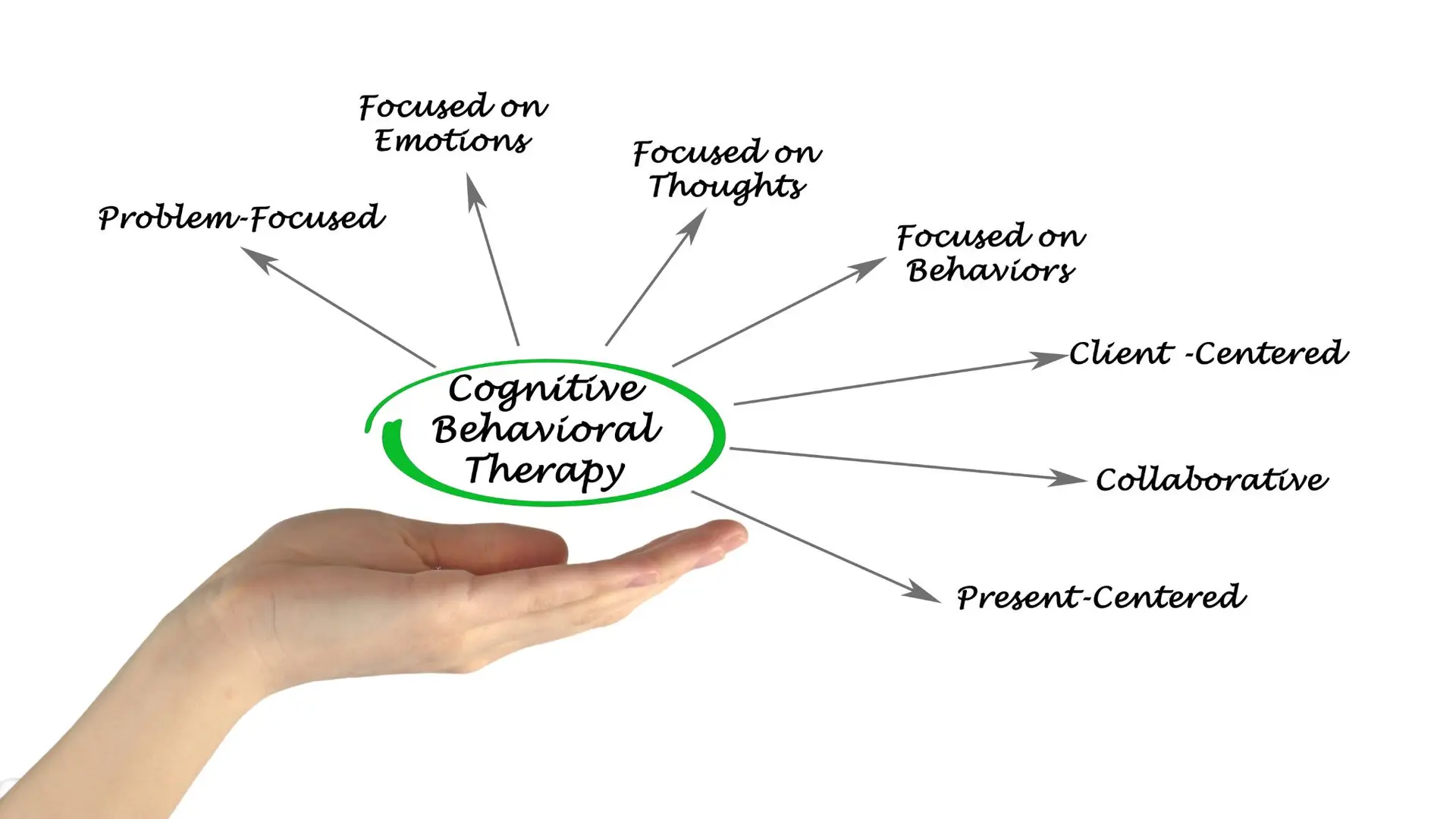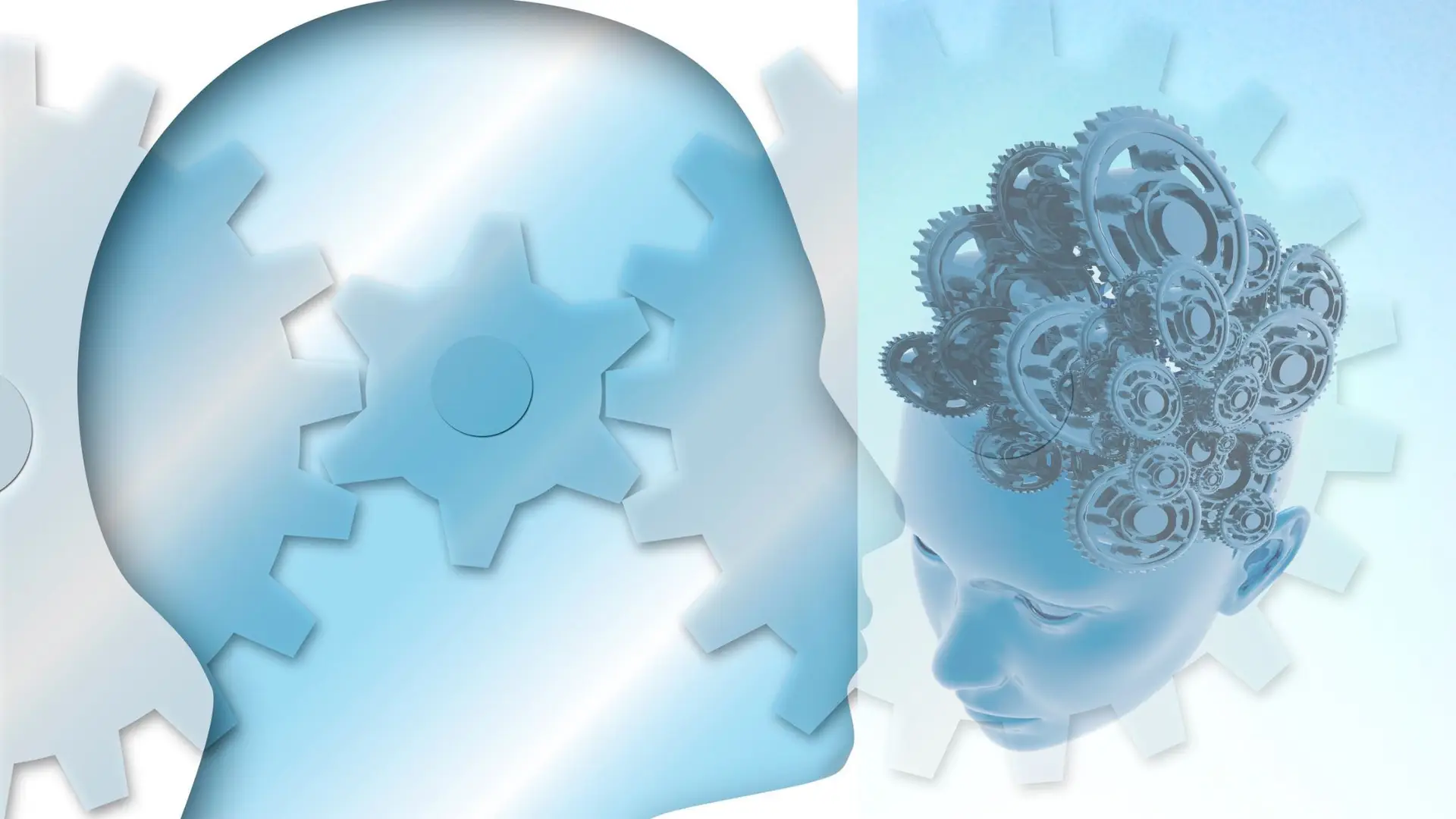
(CBT) Cognitive Behavioural Therapy
Cognitive Behavioural Therapy (CBT) is a psychotherapeutic approach that focuses on how thoughts, feelings, and behaviours are interconnected. It’s commonly used to address a wide range of mental health issues, but it has also been found effective in managing chronic pain.
In the context of chronic pain, CBT doesn’t aim to eliminate the physical sensation but instead helps individuals manage their perception and response to pain. It involves several components:
Cognitive Restructuring
Cognitive Behavioural Therapy (CBT) offers a powerful tool called Cognitive Restructuring, a cornerstone in managing chronic pain by reshaping thought patterns and emotional responses associated with the pain experience.
Cognitive Restructuring, within the framework of CBT, operates on the premise that our thoughts, feelings, and behaviours are interconnected. In the context of chronic pain, individuals often harbour negative thought patterns that exacerbate their suffering. These may include catastrophizing, wherein individuals expect the worst outcome or amplify the significance of their pain, leading to increased distress and disability. All-or-nothing thinking, another common cognitive distortion, can prompt individuals to view their lives as completely limited by pain, hindering their engagement in activities that could improve their condition.
The core goal of Cognitive Restructuring is to identify and challenge these maladaptive thought patterns. This process involves several steps:
Awareness and Identification: The first step is to become aware of these negative thoughts. Patients learn to identify and acknowledge their automatic negative thoughts associated with pain. Keeping a thought diary can aid in recognizing patterns and triggers.
Examination and Evaluation: Once identified, these thoughts are examined and evaluated for accuracy and helpfulness. Individuals work with therapists to question the validity of these thoughts, seeking evidence that supports or refutes their beliefs.
Reframing and Modification: Through guidance from therapists, patients learn to reframe their thoughts. This involves replacing irrational or negative thoughts with more balanced and realistic ones. For instance, shifting from “I can’t do anything because of my pain” to “I can find ways to manage my pain and engage in activities that are within my limits.”
Practice and Reinforcement: Continual practice is crucial in embedding these new thought patterns. Patients are encouraged to repeatedly challenge and reframe their thoughts, reinforcing positive changes over time.
Cognitive Restructuring doesn’t aim to deny the existence of pain or dismiss its impact. Rather, it equips individuals with the tools to manage their reactions to pain more effectively. By altering thought patterns and emotional responses, it can alleviate distress and improve coping mechanisms, subsequently reducing the perceived intensity of pain.
Studies have highlighted the efficacy of Cognitive Restructuring in chronic pain management. Research demonstrates that individuals who undergo CBT-based interventions focusing on Cognitive Restructuring experience reduced pain intensity, decreased emotional distress, and improved overall functioning compared to those who receive traditional pain management alone.
Behavioural Strategies
Behavioural Strategies in CBT acknowledge that one’s actions and lifestyle choices can influence the experience of chronic pain. These strategies encompass a range of techniques designed to address behavioural patterns that exacerbate pain or impede recovery. They commonly include:
Activity Pacing: Individuals with chronic pain often experience a cycle of overactivity followed by a period of rest due to pain exacerbation. Activity pacing involves breaking tasks into manageable segments and balancing periods of activity with rest. This approach helps prevent overexertion while maintaining functionality.
Graded Exposure: This technique involves gradually exposing individuals to activities or movements that they may have been avoiding due to fear of exacerbating pain. By slowly and systematically reintroducing these activities in a controlled manner, patients learn to tolerate and manage pain triggers.
Behavioural Activation: Chronic pain can lead to reduced engagement in enjoyable or meaningful activities, contributing to feelings of isolation and low mood. Behavioural activation aims to encourage participation in pleasurable activities, which can improve mood and reduce the focus on pain.
Goal Setting and Planning: Setting realistic and achievable goals helps individuals regain a sense of control and accomplishment. With the guidance of therapists, patients establish specific goals related to physical activities or daily tasks, gradually working toward these objectives.
These strategies are implemented collaboratively between therapists and individuals experiencing chronic pain. Therapists help patients identify specific behaviours contributing to their pain experience and guide them in adopting healthier approaches to manage their condition.
The effectiveness of Behavioural Strategies within CBT for chronic pain management is well-documented. Research indicates that incorporating these strategies into treatment leads to improvements in pain management, increased activity levels, enhanced emotional well-being, and improved overall functioning.
By integrating Behavioural Strategies into their lives, individuals with chronic pain can experience a shift in their perception and response to pain. Instead of feeling constrained by their condition, they gain a sense of empowerment and autonomy. This, in turn, fosters resilience and adaptability, enabling them to engage more fully in life despite the presence of persistent pain.

Relaxation Techniques
(CBT) offers a holistic approach to managing chronic pain, incorporating Relaxation Techniques as a vital component. These techniques aim to alleviate the emotional distress and physical tension associated with persistent pain, promoting a sense of calmness and enhancing coping mechanisms.
Relaxation Techniques encompass a variety of practices designed to reduce stress, anxiety, and muscle tension, all of which can exacerbate the experience of chronic pain. These techniques commonly include:
Deep Breathing: Deep breathing exercises focus on slow, deliberate breathing patterns, often combined with diaphragmatic breathing. This technique helps calm the nervous system, reducing stress and promoting relaxation.
Progressive Muscle Relaxation (PMR): PMR involves systematically tensing and relaxing different muscle groups in the body. By intentionally tensing and releasing muscles, individuals learn to recognize and alleviate tension, promoting overall relaxation.
Guided Imagery: Guided imagery utilizes visualization techniques to create calming and pleasant mental images. It involves imagining serene landscapes or peaceful scenarios, diverting attention away from pain and inducing relaxation.
Mindfulness and Meditation: Mindfulness practices encourage individuals to focus on the present moment, observing sensations, thoughts, and emotions without judgment. Meditation techniques, such as mindfulness meditation or body scan meditation, can help individuals develop a non-reactive awareness of pain sensations.
These techniques are taught and practiced in collaboration with therapists within the framework of CBT. Therapists guide individuals through these relaxation exercises, helping them develop skills to effectively manage stress and reduce the impact of chronic pain on their daily lives.
Research has consistently demonstrated the efficacy of Relaxation Techniques within CBT for chronic pain management. Studies indicate that individuals who regularly practice relaxation techniques experience reduced pain intensity, decreased emotional distress, and improved overall functioning compared to those who rely solely on traditional pain management approaches.
By incorporating Relaxation Techniques into their daily routine, individuals with chronic pain can experience a profound shift in their relationship with pain. These techniques empower individuals by providing them with practical tools to manage stress and anxiety, thereby interrupting the cycle of heightened pain perception and emotional distress.
Moreover, these techniques offer individuals a sense of agency and control over their pain experience. Rather than feeling overwhelmed by the constant discomfort, individuals learn to cultivate a sense of relaxation and calmness, fostering resilience and improving their ability to cope with chronic pain.
Goal Setting and Problem-Solving
Cognitive Behavioural Therapy (CBT), renowned for its comprehensive approach, integrates Goal Setting and Problem-Solving as crucial elements in managing chronic pain. These components equip individuals with the skills to set achievable objectives and navigate challenges effectively, fostering adaptive coping strategies.
Goal Setting within the context of CBT involves establishing specific, realistic, and measurable objectives related to pain management and daily activities. It serves as a roadmap for individuals to work towards tangible outcomes despite the presence of persistent pain. The process of setting goals typically involves:
Identifying Goals: Collaboratively with therapists, individuals pinpoint areas they want to improve or activities they wish to engage in despite their pain. These goals could range from increasing physical activity levels to enhancing mood and social engagement.
Breaking Goals Down: Breaking larger goals into smaller, manageable steps makes them more attainable. This approach helps individuals focus on gradual progress, reducing the feeling of being overwhelmed.
Monitoring and Adjusting: Regularly reviewing and adjusting goals based on progress or setbacks is essential. This flexibility allows for modifications to the plan, ensuring that goals remain achievable and realistic.
Problem-Solving strategies in CBT aim to equip individuals with the skills to effectively address challenges and obstacles encountered in their pain management journey. These strategies commonly involve:
Identifying Problems: Individuals learn to identify specific problems or barriers hindering their progress in achieving their set goals. This step involves thorough exploration and recognition of factors contributing to challenges.
Generating Solutions: Once problems are identified, individuals brainstorm potential solutions. Therapists guide this process, encouraging creativity and exploring various approaches to address the issues at hand.
Implementing Solutions: After evaluating different solutions, individuals select and implement the most feasible and practical ones. This step involves putting plans into action and monitoring the effectiveness of chosen solutions.
Evaluating Outcomes: Regularly assessing the outcomes of implemented solutions helps individuals determine their effectiveness. This evaluation informs future problem-solving strategies, allowing for continuous improvement.
Research underscores the effectiveness of Goal Setting and Problem-Solving within CBT for chronic pain management. Studies reveal that individuals who actively engage in goal-setting practices and problem-solving strategies experience improved pain management, increased self-efficacy, and enhanced overall well-being compared to those relying solely on traditional pain management approaches.
By incorporating Goal Setting and Problem-Solving techniques into their pain management routine, individuals with chronic pain acquire invaluable skills that extend beyond symptom management. These skills foster adaptability, resilience, and a sense of empowerment, enabling individuals to navigate life’s challenges more effectively despite the presence of persistent pain.
The Life of Chronic Pain
Click below to view the other sections within the life of Chronic Pain
Click Here